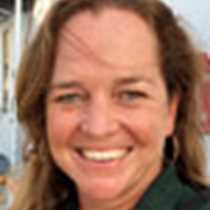Riga, Latvia
This particular chapter in our exploration of the Baltic Sea as a bridge between nine nations was one of the most exciting ones so far. We reached the newly independent state of Latvia bright and early, and tied up along the banks of the Daugava River alongside the wonderful capital city of the country, Riga.
Historically, the city’s protected position in the bay of Riga made it an important centre of trade, commerce, and military strategy, which we could deduce by the sheer number of historic buildings we encountered along our walks. Riga was a major centre of the Hanseatic League and became very prosperous in the 13th-15th centuries through trade with Central and Eastern Europe, which is reflected in its fascinating medieval centre. A renewed prosperity within the new urban middle classes at the turn of last century led to a burst of modern architecture in the suburbs surrounding the old town. The boulevard city that grew up in the 1900s is largely what the Germans call Jugendstil. Riga, in fact, has the finest collection of these art nouveau buildings in Europe, and the muddle of architectural styles from different episodes in the rich history of this country led UNESCO to declare it a World Heritage Site in 1997. Riga is now a vibrant, modern and very lively city home to almost half of Latvia’s population. New Riga also has beautiful parks, boulevards, canals and monuments, which make it both an exciting and a contemporary city. It has a very mixed population, resulting from an intensive Russification after WWII.
We went ashore to explore the city, by bus at first then on foot. Our wanderings led us to the Small Guild House, where the Latvian School of Folkloric art gave us a wonderful performance by children ranging from the ages of 3 and 18. This was a particularly meaningful stop, as song and dance are very important components of the heritage of the Baltic States: they represent the way the Baltic peoples kept their culture alive during centuries of serfdom to Baltic German landlords.
We could opt to have lunch either on board or find a little something in Riga, however we were all aboard by 2pm, when the National Geographic Endeavour cast off from the dock. We spent the afternoon at sea, relaxing and learning more about the fascinating Vikings that once dominated the area, as we sail 254 nautical miles to one of their strongholds: Gotland, Sweden.
This particular chapter in our exploration of the Baltic Sea as a bridge between nine nations was one of the most exciting ones so far. We reached the newly independent state of Latvia bright and early, and tied up along the banks of the Daugava River alongside the wonderful capital city of the country, Riga.
Historically, the city’s protected position in the bay of Riga made it an important centre of trade, commerce, and military strategy, which we could deduce by the sheer number of historic buildings we encountered along our walks. Riga was a major centre of the Hanseatic League and became very prosperous in the 13th-15th centuries through trade with Central and Eastern Europe, which is reflected in its fascinating medieval centre. A renewed prosperity within the new urban middle classes at the turn of last century led to a burst of modern architecture in the suburbs surrounding the old town. The boulevard city that grew up in the 1900s is largely what the Germans call Jugendstil. Riga, in fact, has the finest collection of these art nouveau buildings in Europe, and the muddle of architectural styles from different episodes in the rich history of this country led UNESCO to declare it a World Heritage Site in 1997. Riga is now a vibrant, modern and very lively city home to almost half of Latvia’s population. New Riga also has beautiful parks, boulevards, canals and monuments, which make it both an exciting and a contemporary city. It has a very mixed population, resulting from an intensive Russification after WWII.
We went ashore to explore the city, by bus at first then on foot. Our wanderings led us to the Small Guild House, where the Latvian School of Folkloric art gave us a wonderful performance by children ranging from the ages of 3 and 18. This was a particularly meaningful stop, as song and dance are very important components of the heritage of the Baltic States: they represent the way the Baltic peoples kept their culture alive during centuries of serfdom to Baltic German landlords.
We could opt to have lunch either on board or find a little something in Riga, however we were all aboard by 2pm, when the National Geographic Endeavour cast off from the dock. We spent the afternoon at sea, relaxing and learning more about the fascinating Vikings that once dominated the area, as we sail 254 nautical miles to one of their strongholds: Gotland, Sweden.




